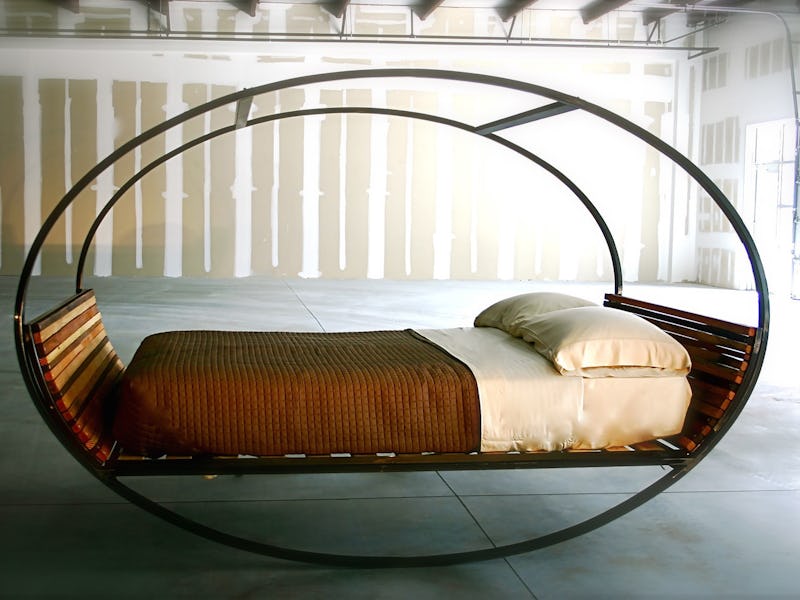Rocking Beds Are a Crazy and Crazy-Effective Solution to Sleep Problems
We're nothing more than overgrown toddlers when it comes to sleeping, so why don't our beds rock?

On any given night, up to 70 million Americans struggle to get a good night’s sleep. And who can blame them? Insufficient sleep is considered a national public health problem, and we’re running out of options to try: Melatonin has weird side effects, valerian root smells like ass, and the Nyquil hangover is all too real. Some sleep researchers, fed up with supplementation, think the trick is to ask a simple question: Who has the best sleep? Babies, that’s who. And no small part of their restful slumber comes courtesy of their mothers. Rocking works, but products that mimic that soothing motion are surprisingly scarce.
Unfortunately (or fortunately), most parents will not rock their adult children to sleep. We might not realize it, but many of us have replaced our mothers’ arms with the gentle swaying of a subway car or the shaking of a taxi’s backseat. Even people less inclined to snooze on public transit have fallen asleep in a rocking chair or hammock. There’s evidence to suggest that we’re nothing more than overgrown toddlers when it comes to sleeping, which in turn suggests that we’re in dire need of adult bassinets or houseboats — the former option being cheaper.
Imagine this baby cradle, but for adults.
In 2011, a study published in the journal Current Biology was the first to make a scientific case for rocking adults to sleep. In the study, 12 male “good sleepers” hooked up to brain electrodes were asked to nap on a custom-made rocking hammock that either stayed still or rocked gently at a frequency of 0.25 Hz (once every 4 seconds). Every participant that was rocked fell asleep faster and had a huge boost in sleep-related brainwaves associated with rocking.
Problem is, getting your hands on a customized experimental hammock is about as hard as finding a human down to sway you to sleep in their arms (that is, difficult but not impossible). There’s a market out there out there for adult rockers, whether of the bed or human variety, but surprisingly few products are readily available for reasonable prices.
Various patents for rocking beds exist, but few have been turned into actual products. Currently, if you’re serious about rocking yourself to sleep, one of these beds will set you back at least $3,000.
Fortunately, a team of scientists from the University of Nagoya are on a quest to mechanically mimic the “effect of mother’s embrace and rocking motion” to develop a “relaxation machine” for reducing stress. They’re hoping the technology they develop will be integrated into systems like the somewhat creepily named Robot for Interactive Body Assistance, or RIBA, which is already currently used to lift wheelchair-bound patients.
Desperate times call for desperate measures. For now, finding solace from restless nights may come at a steep cost, but as a good night’s sleep becomes increasingly elusive, the demand for adult rockers will only increase. In the meantime, there’s always Craigslist.